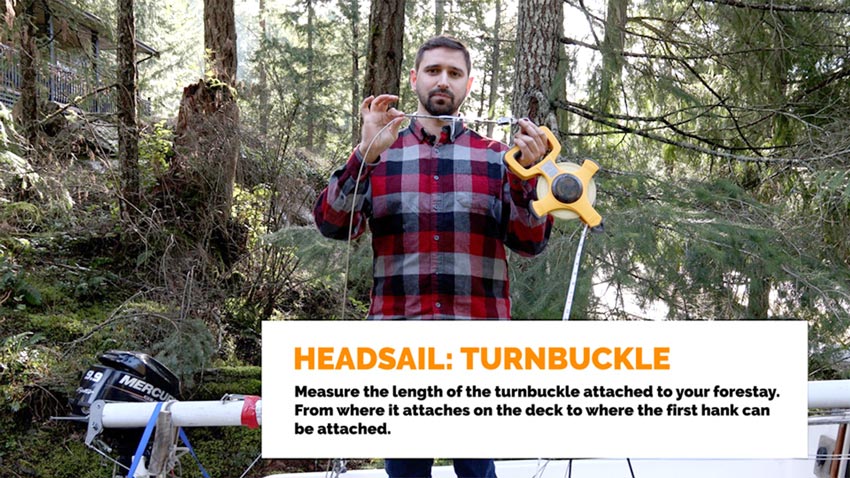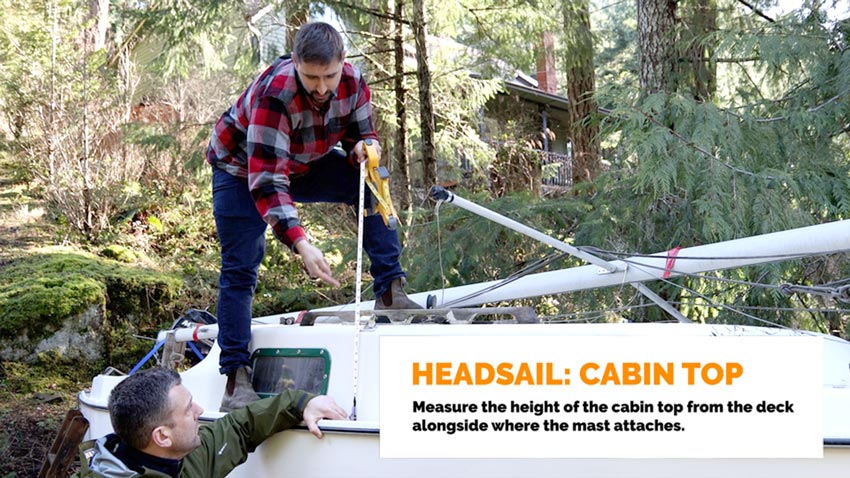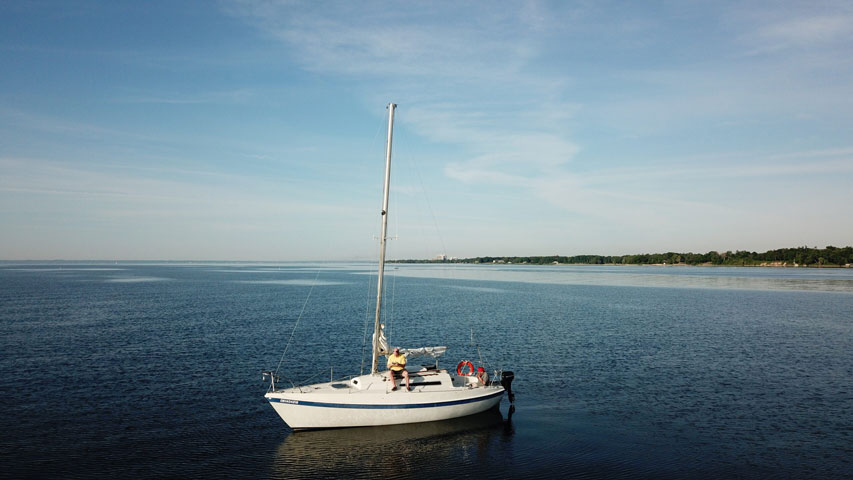Measuring for a New Headsail: With the Mast Down
We are going to continue our educational series on how to take your boats rig measurements for new sails from Precision sails. This blog and video will focus on Measuring for a new headsail with the mast down. If you’re looking for mainsail measurements visit here.
(If you rigging is still set up visit this blog for a guide on how to measure for a new headsail)
Clients tell us all the time all the time they can’t get their measurements to us because their sailboats rigs are taken apart. Well this blog and video we show you how to get the measurements for a new headsail without having your boat put together or if it is being stored for winter!
You will need a tape measure and a pair of calipers!
Turnbuckle Height
Measure the length of the turnbuckle attached to your forestay. From where it attaches on the deck to where the first hank can be attached.
What we’re going to start doing is measuring the turnbuckle. We can’t have a hank that sits over top of this. Measure from where it attaches on the deck to where the first hank can sit at the base of the luff of the sail (top of the turnbuckle).
Turnbuckles can vary in size often depending on the diameter of the wire or the size of your boat.
Usually, the first hank of the sail is higher on the luff than what you measure here. This depends on where we are going to position the sail in case we need to make space to clear the pulpit, etc.
This gives us an idea of where the minimum that the hank position could possibly sit so we can have a point to work off of.
Forestay Length (Luff)
The next thing we need to do is measure the forestay. This is the #2 measurement on the rig spec diagram.
If the fore stay is completely off the boat. We suggest attaching the forestay to something so you can get a little tension in the wire.
It can be helpful to have a second person to help you secure both ends of your forestay. If you don’t have a buddy using tape and attaching things to places will suffice.
Measure along the forestay from the deck attachment point to the top of the wire. You don’t have to take it right to where it attaches. Just to the top of the wire. This tells us where the last hank position could be. However, you don’t have to worry too much about this. The designers will be taking out the required reductions. Your sail will probably sit 6′ to 10′ below the top of the forestay regardless
If you do have a rig that has the halyard sits significantly lower this is a really good chance to take a photo to send us.
Foretriangle Height (Leech)
The next thing to measure is the Foretriangle height. What we’re really trying to do is ascertain that your rigging is matching or close to rig specs. Generally they will be but it’s very common, especially for small boats that people customize them. Maybe a mast was damaged in a storm and had to be replaced. Some boats have been in the water for over 40 years. There is bound to be different from stock parts installed on the boat. When rigging is replaced sailors typically replace with whatever they have available which might be different.
The goal here is to confirm that the measurements are close to the manufacturers rig specs.
So what you’re going to do is measure along the forefront of the mast from where the halyard comes out to the base of the mast.
Make sure to double check your measurements.
Cabin top
Next up is the cabin top. The reason for this is that the I measurement isn’t actually to the base of the mast this is a very common misconception. Your fore triangle height or I measurement actually goes to the deck height, not the cabin top.
What we are going to do now that we’ve taken the length of the forefront of the mast, we’re going to take the height of the cabin top.
So we take this and add it to the fore triangle height which gives us our proper I measurement.
Measure the height of the cabin top from the deck alongside where the mast attaches.
Foretriangle Base (Foot)

Now for the fore triangle base or the J measurement.
We’re just making sure the boat matches rig specs sometimes there are adjustable masts fore and aft or people have had their rigging changed. Perhaps they were trying to combat weather helm or other issue, they came up with this solution.
To get your measurement measure from where the forestay attaches on the deck in a straight line to the front of the mast, don’t go to the back, or the middle make sure it is the front of the mast.
Track position

What we’re going to do is use the deck as a baseline.
In order to ascertain the proper sheeting angle and clew height we need to know how high up the tracks sit up off the deck. This will generally be the same as the cabin top measurement from before.
Have any more questions? Want to learn how to measure your mainsail with your mast down? Visit this page.







